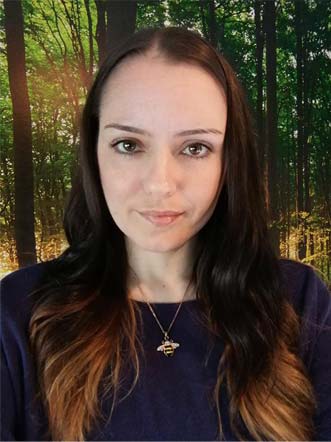
So, you’ve just been told you need a stoma. What are your first thoughts about that?
Personally, I think it depends on the situation. Research also suggests that people with a permanent stoma adapt better than those who have one temporarily.
I’ve had so many different feelings and emotions about having an ostomy throughout my journey with IBD; positive and negative. I wanted to share these so that you know there is no right or wrong way to feel!
My first ileostomy
Going back to my first ileostomy in 2007, I don’t think I was really even taking in what was going on. It had been such a whirlwind three weeks. I got really unwell, very quickly. I was admitted to the hospital via A&E and diagnosed with Ulcerative Colitis the same day. Not even a week later, I was told I needed emergency stoma surgery. All I cared about at the time was that it was supposed to make me feel better. I was told removing my colon would cure my ulcerative colitis, and that I could have stoma reversal surgery at a later date, so I wouldn’t have to wear a stoma bag forever. I’d never been sick in my life, and I had decided it most definitely did not suit me! The stoma nurse came and marked up my abdomen, and that’s pretty much all I remember.
The first time I saw it, I felt physically sick. I nearly fainted when I looked at my tongue after having that pierced, so I’m sure you can imagine how I felt when I saw my new stoma! Nothing really prepares you for what it will look like, unless you have seen one before. I wasn’t expecting it to be swollen, or to see black stitches around it…
To be honest, I think the stitches freaked me out more than anything else. When all was healed and no longer swollen, I didn’t mind looking at it so much. I didn’t want anyone else to see it though, not even in its bag!
I didn’t have a good time with it. I now know that the care I received wasn’t good enough. At the time, I had no idea. I suffered with leaks and burnt skin constantly, so I couldn’t wait to get rid of it! I didn’t even want to leave the house anymore because I’d had leaks when out and about.
I thought that was what life with a stoma was like. I didn’t know any different because I didn’t know anyone else with a stoma. In my mind, it was temporary, and I just wanted to pretend it didn’t exist. I didn’t want to talk about it. In hindsight, I believe talking to other people would have helped, but I would not have accepted that at the time. I felt like I was the only person in the world going through it…
My Jpouch hadn’t been all that I had expected. I didn’t get to return to the normal I knew before, and my health was worse with the Jpouch than it had been with the ileostomy. Still, returning to a stoma was not something I thought I would ever be willing to do. My health might have been better, but if I couldn’t leave the house then what good was it?!
Anger and frustration at how my life was had motivated me to begin raising awareness of Inflammatory Bowel Disease online in 2014. So, later that year, when my IBD nurse said that it was time for me to start considering the removal of my Jpouch, I was fully submerged in the online IBD community. It was there that I “met” many ostomates, who talked about the improvement in their quality of life because of their stoma. Those people have no idea how much of a difference they made to how I felt. I realised that all of the issues I’d had, should have had solutions! I definitely did not want a stoma, but I thought that IF I did need one, I should be able to cope better than I did the first time.
After further testing, multiple strictures (narrowed parts of my intestine) had been identified, and I had been admitted for emergency surgery. My surgeon told me that he could not tell me whether I would wake up with a stoma or not, or whether it would be a permanent one. It would depend on what state my Jpouch was in when they got in there. So, I was marked up on both sides and wheeled into theatre. I was worried, but confident I could deal with whatever the outcome was.
My second ileostomy
I did wake up with a stoma. I don’t mind admitting that hot nausea washed over when I realised. I was desperate to find out if it was temporary or permanent, but no-one could answer me. It wasn’t until the next day when I actually saw my surgeon that I found out it was only temporary. My Jpouch had been damaged while they were in there, so it had been fixed and left to heal.
The difference to my quality of life was massive. I was free of pain medication within a few weeks, and back to work in less than four! It wasn’t perfect. I still had the occasional leak and a lot of itching during the hot weather, but I LOVED my stoma. I had read that naming your stoma can help you accept it, bond even, so I called him Porta – because he was my little portaloo!
I think giving him a name made it easier for me to talk about it. All of my friends knew this time because of my awareness raising activities, and they would ask how Porta was etc.
When the time came to have my Jpouch reconnected, I genuinely considered not doing it. Eventually, I decided to go ahead with it, with the mindset that at least I now knew that I could live with a stoma if it came to it further down the line.
My third ileostomy
Obviously, it did come to it. Again, my Jpouch was preventing me from living my life. Constant Pouchitis meant that I was often stuck in the house. Being unwell all of the time and needing to take pain medication just to get out of bed every day left me completely exhausted, and incredibly unhappy. None of the treatment options had worked, and I had been offered a medical trial, but I had lost all will to keep fighting with my Jpouch at that point. I was desperate to feel better. I was desperate to have my ileostomy back!
If someone had told me anytime between 2007 and 2014 that I would be desperate to get a stoma, I would never have believed it. In fact, I’d said on more than one occasion: “I would rather die”, which makes me incredibly sad to think about now!
I was so eager to get a stoma again that I was constantly on the phone, pestering the surgeon’s secretary for a date. When the surgeon offered to just disconnect the pouch and leave it there in case I wanted to try again in the future, I point blank refused. A permanent stoma was the only way forward for me. I knew that.
I began reading everything I could. I asked questions in the community about anything that I’d had issues with in the past, and what people did to deal with them. I felt fully prepared! Excited even!
I got my current stoma in September 2018. It is still called Porta, but I very rarely refer to it by name anymore. I feel like referring to it by name had almost made me consider it a separate entity. It is not. Now, I simply tend to call it my stoma.
So, as you can see, our relationship has been a turbulent one. I’ve had so many ups and downs, but I genuinely feel like this was the only way I was going to be able to enjoy my life again. I have every faith that we will live happily ever after, but fully expect a few bumps in the road along the way!
Sahara was admitted to hospital and diagnosed with Ulcerative Colitis at the age of 19,  after just two weeks of being incredibly unwell. One week later, she had emergency surgery to remove her colon and rectum, and had her first ileostomy. A turbulent journey followed; a multitude of treatments, complications, seven surgeries, a failed J-Pouch, and three ileostomies later, she is living with a permanent stoma and is a pro-active IBD and ostomy advocate.
after just two weeks of being incredibly unwell. One week later, she had emergency surgery to remove her colon and rectum, and had her first ileostomy. A turbulent journey followed; a multitude of treatments, complications, seven surgeries, a failed J-Pouch, and three ileostomies later, she is living with a permanent stoma and is a pro-active IBD and ostomy advocate.
Sahara joined the online IBD and ostomy community in 2014, and it very quickly became apparent to her that whilst awareness is important, even more important than that is providing support to others as they navigate the stormy waters of life with IBD, or an ostomy.
She runs #IBDSuperHeroes fundraising and awareness campaign, and the Facebook support group. She is a blogger for InflammatortyBowelDisease.net and an IBD Patient Consultant for merakoi – bridging the gap between patients and healthcare. She gets involved with research whenever she can, and is a volunteer for Cure Crohn’s Colitis, where she donates her time and expertise in social media marketing and content creation.
